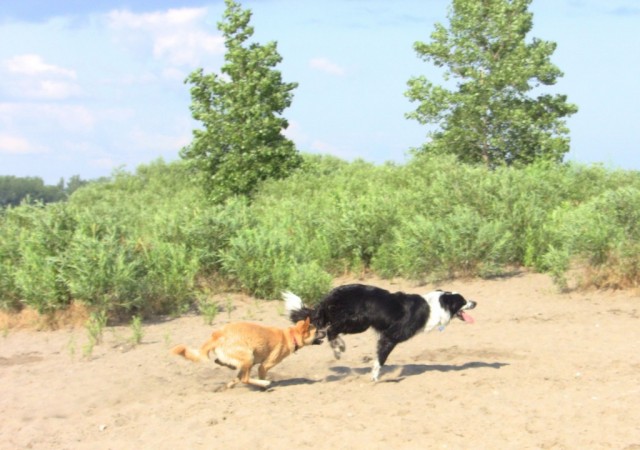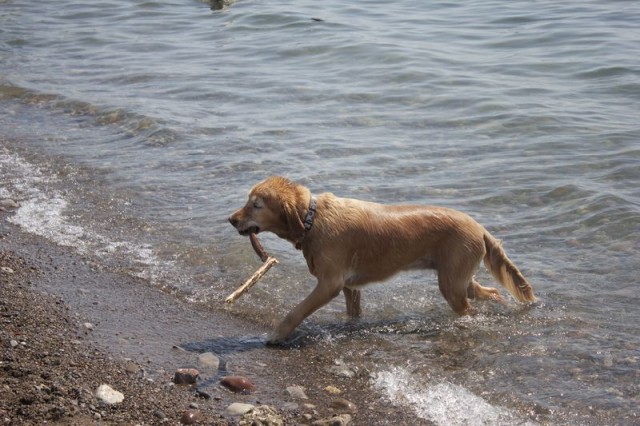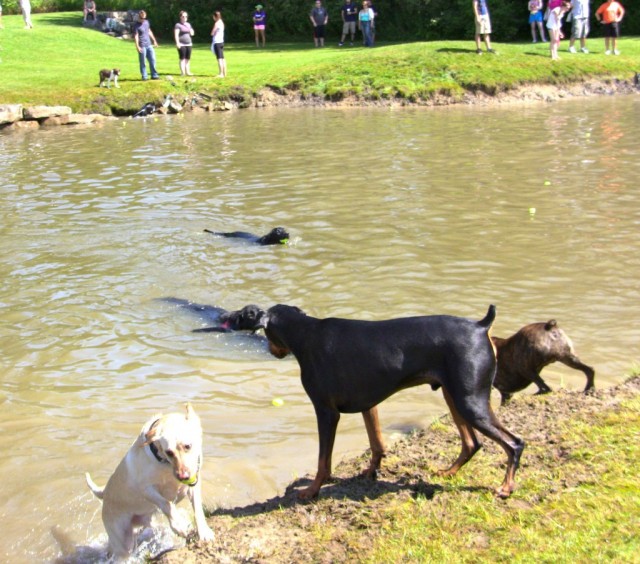Different Dog Breeds, Different Exercise Plans?
This week we look at whether different dog breeds require different exercise plans!
Our research shows the answer is “yes”. Customized mental and physical exercise plans can keep dogs healthy and happy!

As we reviewed in our documentary, certain dogs were bred for a particular role like hunting, herding livestock or providing protection.
However, for many modern dogs, the most common job is Cuddle Buddy and Companion!
They get their food set out for free for them in a bowl, they get treats and some spend entire days lying around the house or locked in a crate. This can make for a lazy, overweight, unhappy, barking, digging, bored or destructive dog!
Before You Start Your Dog’s Exercise Program:
Always check with your dog’s veterinarian before starting an exercise program. The vet can examine your dog for any health issues and suggest safe and appropriate activities and levels of activity for your puppy or dog based on breed, age, health and personality. Good Trainers can also be a great resource (see our Training Tuesday columns), as can AKC, ASPCA and experts like our friends at Slim Doggy.

What Your Dogs Breed Needs- a few tips we saw on the ASPCA site:
- Breeds that are deep-chested, narrow-bodied breeds, such as German Shepherds, Doberman Pinschers and Great Danes should not be exercised right after meals apparently.
- Small or short-legged dogs usually don’t need as much walking as larger dogs.
- Breeds with short or flat noses can have trouble breathing when exercised vigorously.
- Sustained jogging or running or jumping may not be recommended for young dogs whose bones haven’t finished growing. Because large dogs are more prone to cruciate ligament injuries, arthritis, hip issues, sustained jogging can be hard on their joints and bones, too.
- Sighthounds, like greyhounds and whippets, are built for short-distance sprinting, not long-distance runs.
- Dogs like Border Collies need lots of mental and physical stimulation and often love herding, agility, dock jumping and other activities we have listed in previous Friday articles.
- Golden Retrievers and Duck Tollers need lots of exercise and true to the name, often love retrieving and catching – Goldens often love swimming as well.


If you are thinking about getting a puppy or dog, why not adopt a breed that suits your fitness routine and lifestyle?
We explore this in detail in our TV episode on “Puppy Love” .
A few tips include:
- If you live in a small apartment and have a demanding job, or you have mobility issues- it may pay to think small or very big- don’t get a Border Collie or an Eskie. Consider English Toy Spaniels, or Cavalier King Charles Spaniels. Bullmastiffs, Great Danes and Saint Bernards need only moderate exercise, as do Basset Hounds, Shih Tzu, and Pekingese. A short walk or a good bout of indoor play is all a Havanese, Affenpinscher or Chihuahua needs too. Even consider 2, so they can play together and keep each other company while you are out or busy.
- If you love getting outdoors, pick a breed that also enjoys really long daily walks or vigorous exercise. These tend to be medium-large breeds, including Doberman Pinschers, Rottweilers, Irish and English Setters, Weimaraners, Border Collies, most Pointers, German Shepherds, and Dalmatians.

- If you need a little incentive to exercise – think about dogs that love walking such as Akitas, Airedales, or American Eskimo dogs. Small dogs like Pomeranians and Toy Poodles also enjoy walks, but they need much shorter walks than larger breeds.
- If you are love fast-paced activities such as cycling or running, a breed with a lot of energy is the best. Why not try a Jack Russel or a Boxer.

- If you are into slower activities such as yoga or meditation, an older dog might be a better fit for you.
Please comment and share more tips.
If you are looking for activities check out our articles:
http://www.talenthounds.ca/health/10-great-ways-to-get-active-with-your-dog/
http://www.talenthounds.ca/health/fit-dog-friday-lets-get-moving/

So interesting to read about the needs of different types of dogs and great advice that if you are getting a dog, get one that fits YOUR lifestyle. Nothing worse than and Irish Setter with couch potatoes! Thanks for joining our Hop.
Great article! We couldn’t agree more about understanding breeds and their talents and limitations. We just posted on on a Dog Training Exercise Log on the FitDog Friday Blog Hop – looks like we are on the same page!
This is a really great post! Kayo is a deep-chested dog and you’re right: they shouldn’t eat an hour before or after exercising and should not eat within 30 minutes of drinking water. My vet warned me about bloat in deep-chested dogs so I studied up on it a lot to be sure not to put Kayo at risk. Love this post!
Deep-chested breeds are susceptible to bloat if they exerciser right after eating. I learned the hard way that deep-chested Dachshunds are not prone to bloat though. Dachshund are a breed that people don’t think need much exercise because of their short legs but I know many that can out hike big dogs!
Hi Y’all,
Retrievers, if you take the time to understand how to train them and stimulate them mentally, can be kept fit and mentally active without that much effort on the human’s part.
Y’all come by now,
Hawk aka BrownDog